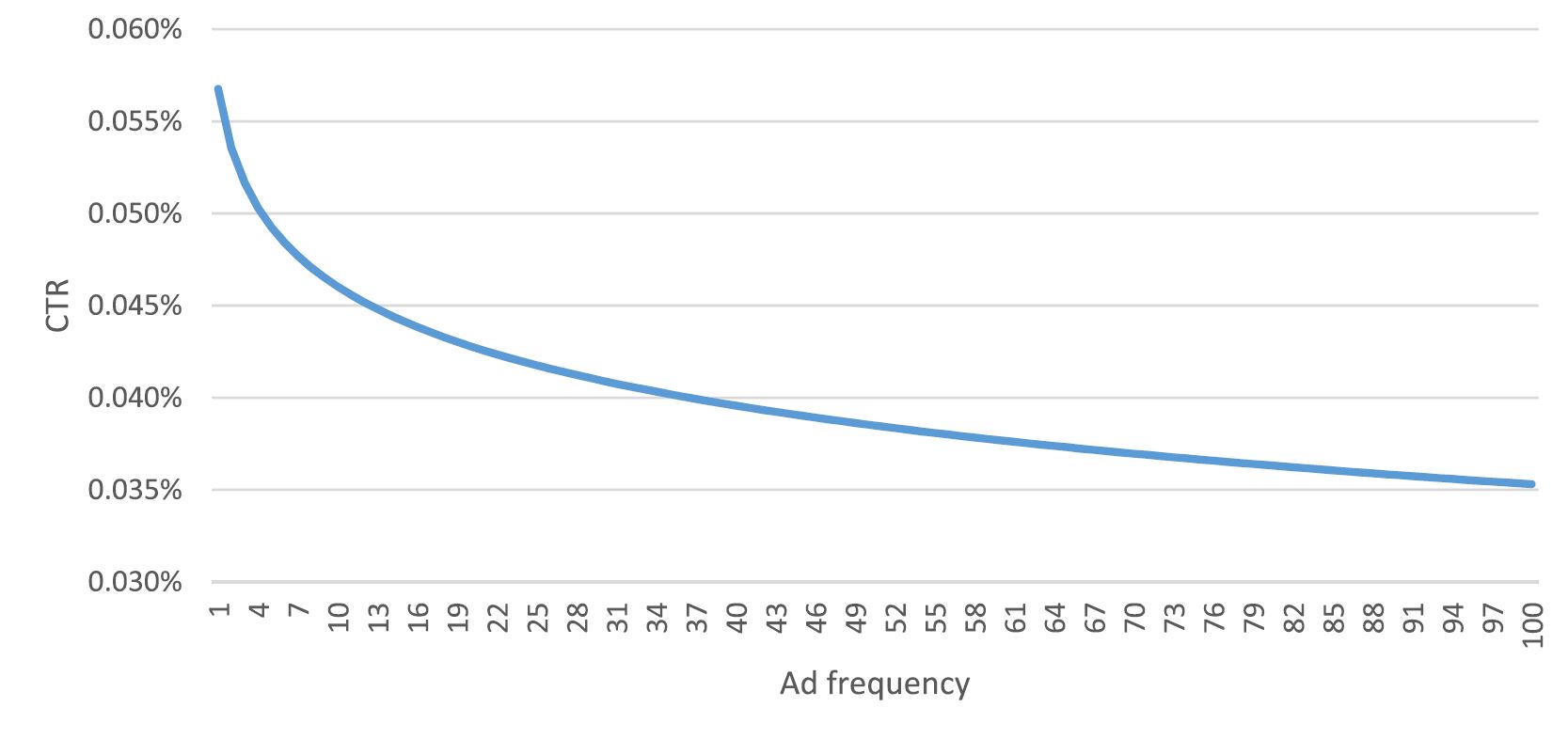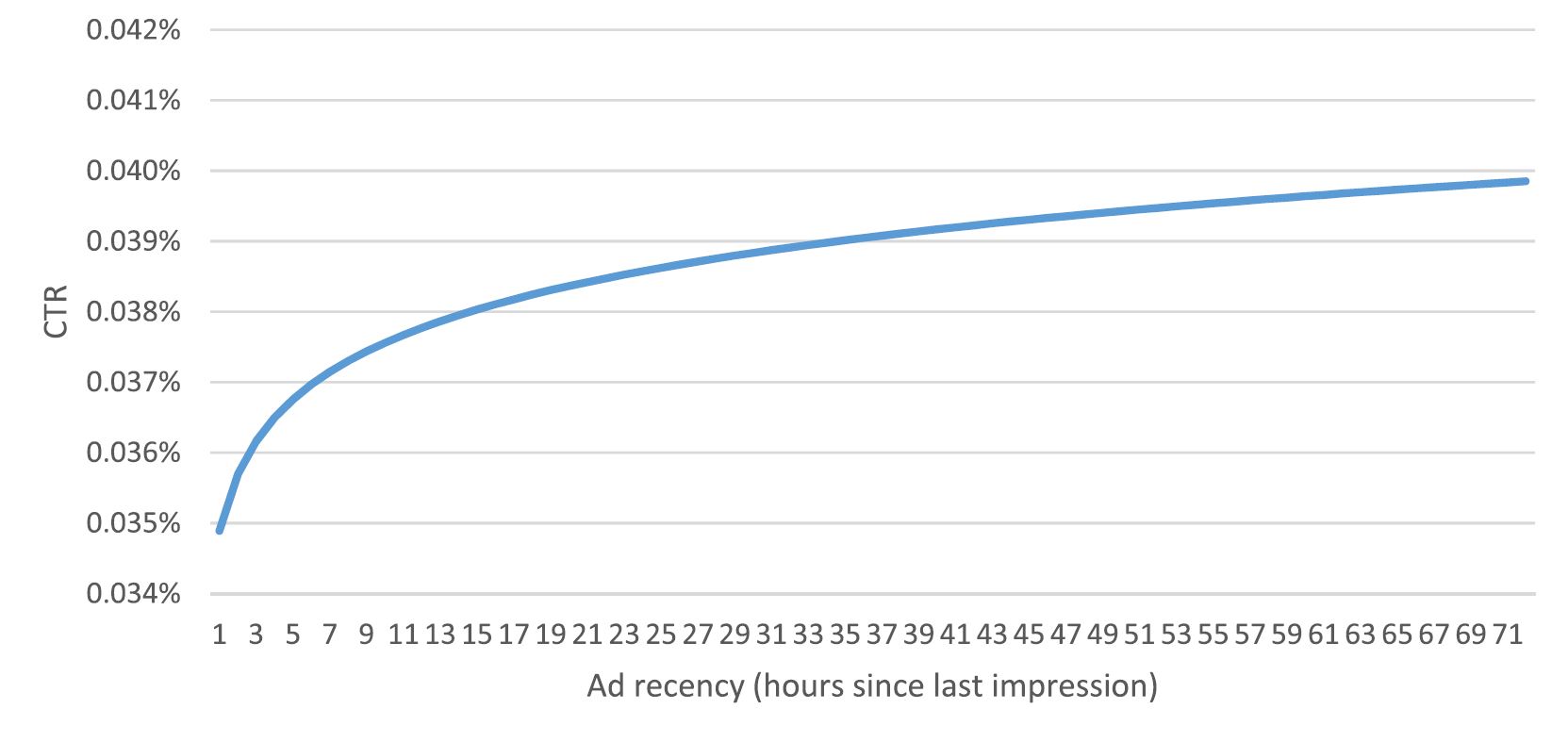Less is more. This could be the conclusion of a recent marketing research study on online advertising published in the IJRM (International Journal of Research in Marketing ; see references at the end of this article).
The authors, Steffen Försch and Evert de Haan (University of Francfort, Germany) studied a dataset of 5.8bn ad impressions and 1.8m clicks delivered for 158 advertisers across 25 industries. Their work show that frequency and recency of online advertising do impact directly the Click-Through-Rate (CTR) and hence the effectiveness of ad spending.
To learn more about this marketing research, continue reading.
What do we know on the effects of frequency and recency in advertising?
Let’s begin by clarifying what ad frequency and ad recency means.
- Ad frequency is pretty straightforward to understand : it’s the total number of exposures divided by time.
- Ad recency however is more difficult to understand. Ad recency describes the time interval between 2 exposures. To borrow the words of the authors: “A higher ad recency means that the previous impression has been more recent”.
The effects of ad frequency / recency have been studied since the 1950’s and, quite logically, the focus of marketing research has shifted from offline advertising to online advertising in the 1990’s.
As the authors put it :
“In terms of ad frequency, most studies have shown that increasing ad frequency enhances advertising- and brand recall […] though it has an inverted U-shape relationship with purchase volume […] and attitudes toward the brand and advertisement. […] The impact of ad recency on ad recall is positive, but only in the short run.”
As you can see previous research focused on brand recall (which makes perfect sense in an offline world) but not on actual purchases. Actual purchases can’t be tracked accurately, even in an online world. In their research the authors therefore use click-through-rate (CTR), the percentage of users clicking on an ad, as a proxy for interest and perhaps for later purchase.
Let’s now examine how Försch and de Haan conducted their research and which conclusions they were able to draw.
The dataset and the hypotheses
The dataset stems from a publisher network and comprises 5.8 bn impressions which generated 1.8 m clicks (this corresponds to an average 0.03% CTR). It covers 158 advertisers from 25 industries and the amount spent on the ads varied from 1010€ up to 635,310€ on the observed period.
The variations in terms of frequency and recency was such that the authors had to form groups to be able to analyze the data :
- 34 ad frequency groups
- 56 ad recency groups
You make the math : it gives 1904 (34 x 56) possible combinations.
Although the authors developed 12 hypotheses and included so-called interaction effects, we just want to deliver here the essence of their work. The 3 main hypotheses were :
- the higher the ad frequency, the lower the CTR
- the higher the ad recency, the lower the CTR
- higher ad frequency and ad recency jointly lead to lower CTR
The results
The unprecedented size of the dataset allowed the authors to draw conclusions that are potentially valid at global scale.
First of all they detected what they call “empirical regularities”, in other words patterns that may apply to the online advertising sector in general and that may reflect common practices among advertisers and common behaviors among users.
- 80% of all ads are served to 20% of the users
- 2.2% of all users clicked on an ad and 20% of users contribute to 27% of all clicks
- for every minutes that passes since the last ad impression the chance of seeing an online ad decreases. Put back in numbers, 10% of additional time since the last ad impression results in 11.1% decrease of the odds of seeing an ad impression
Let’s move now to the main contribution : how do ad frequency and ad recency influence Click-Through-Rate (CTR) ?
Whatever the model chosen (with our without interaction effects) the 3 main hypotheses were confirmed :
- increasing the frequency of ads leads to a decrease in CTR
- increasing the recency of ads (i.e. decreasing the time between 2 ad impressions) leads to lower CTR
- the combination of higher ad frequency and higher ad recency leads to lower CTR too
Conclusion
Increasing ad frequency and recency isn’t necessarily beneficial since CTR is likely to decrease. You should use the graph below to determine what the optimum is and adjust your ad campaign settings accordingly.
The effect of ad frequency on click-through-rate (CTR)
The effect of ad recency on click-through-rate (CTR)
Image : shutterstock
Posted in Research.

